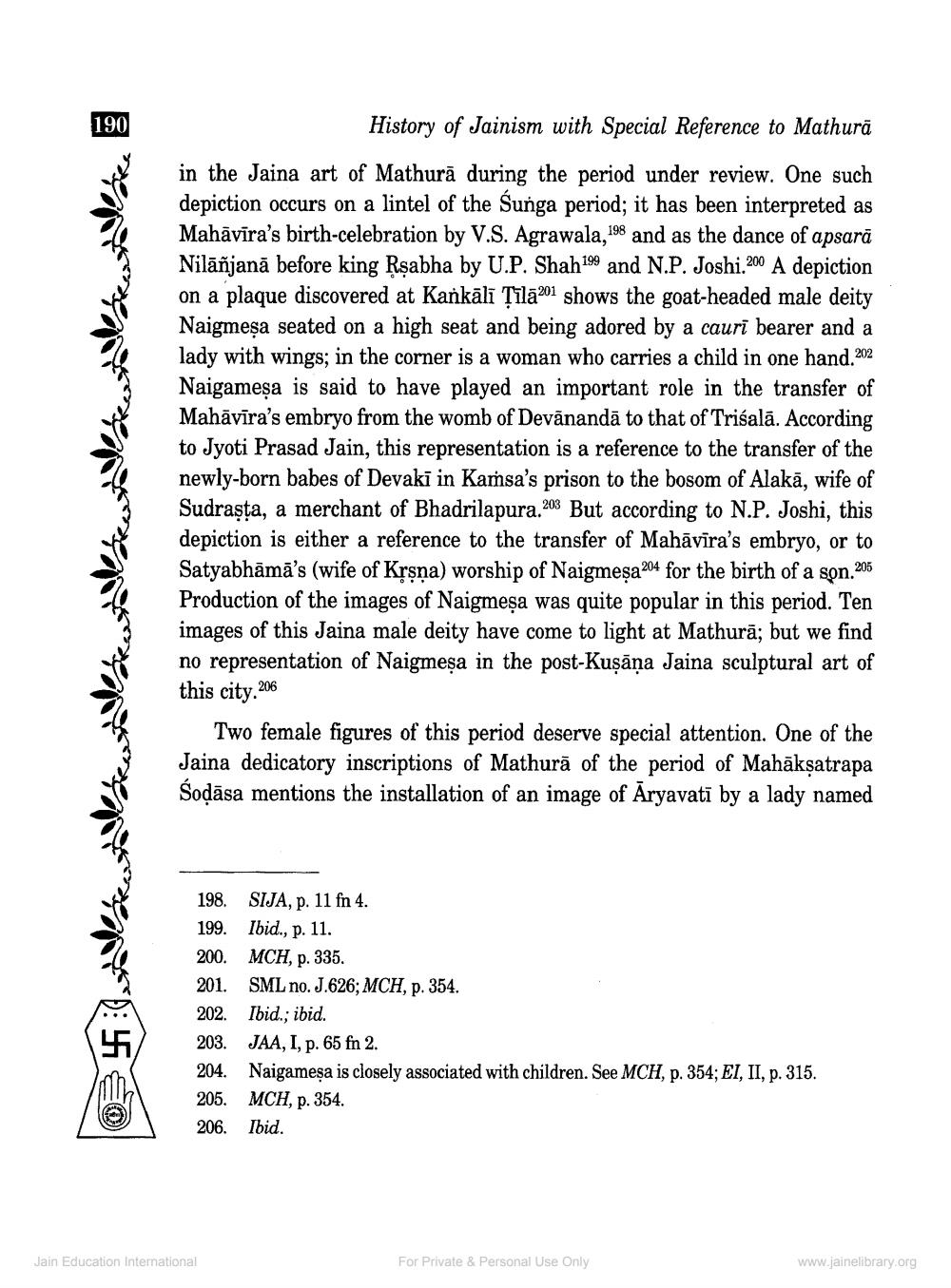________________
1901
History of Jainism with Special Reference to Mathurā
in the Jaina art of Mathurā during the period under review. One such depiction occurs on a lintel of the Sunga period; it has been interpreted as Mahāvīra's birth-celebration by V.S. Agrawala,198 and as the dance of apsarā Nilāñjanā before king Rşabha by U.P. Shah199 and N.P. Joshi.200 A depiction on a plaque discovered at Kankālī ļīlā201 shows the goat-headed male deity Naigmeșa seated on a high seat and being adored by a caurī bearer and a lady with wings; in the corner is a woman who carries a child in one hand.202 Naigameşa is said to have played an important role in the transfer of Mahāvīra's embryo from the womb of Devānandā to that of Trisalā. According to Jyoti Prasad Jain, this representation is a reference to the transfer of the newly-born babes of Devakī in Kamsa's prison to the bosom of Alakā, wife of Sudrasta, a merchant of Bhadrilapura.203 But according to N.P. Joshi, this depiction is either a reference to the transfer of Mahāvīra's embryo, or to Satyabhāmā's (wife of Krşņa) worship of Naigmeşa204 for the birth of a spn.205 Production of the images of Naigmesa was quite popular in this period. Ten images of this Jaina male deity have come to light at Mathurā; but we find no representation of Naigmesa in the post-Kuşāņa Jaina sculptural art of this city.2016
Two female figures of this period deserve special attention. One of the Jaina dedicatory inscriptions of Mathurā of the period of Mahākṣatrapa Sodāsa mentions the installation of an image of Aryavati by a lady named
198. SIJA, p. 11 fn 4. 199. Ibid., p. 11. 200. MCH, p. 335. 201. SML no. J.626; MCH, p. 354. 202. Ibid.; ibid. 203. JAA, I, p. 65 fn 2. 204. Naigameşa is closely associated with children. See MCH, p. 354; EI, II, p. 315. 205. MCH, p. 354. 206. Ibid.
Jain Education International
For Private & Personal Use Only
www.jainelibrary.org




